
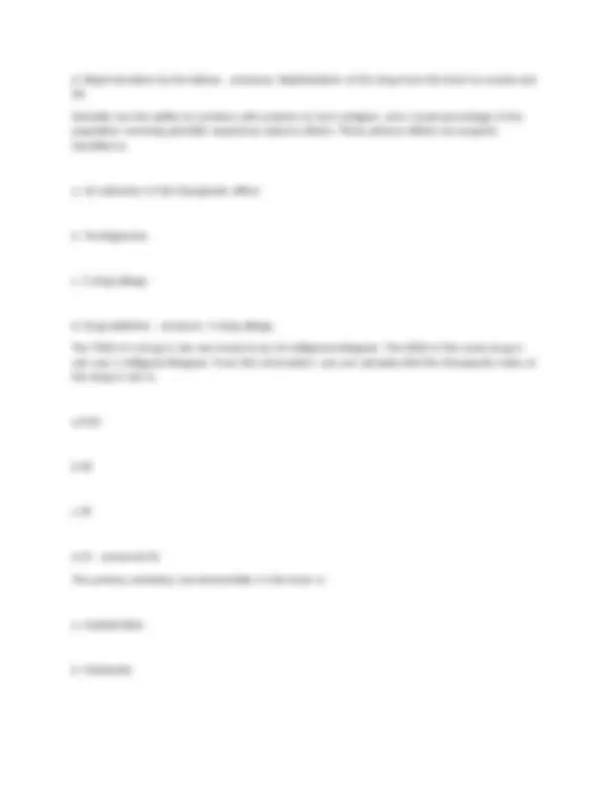
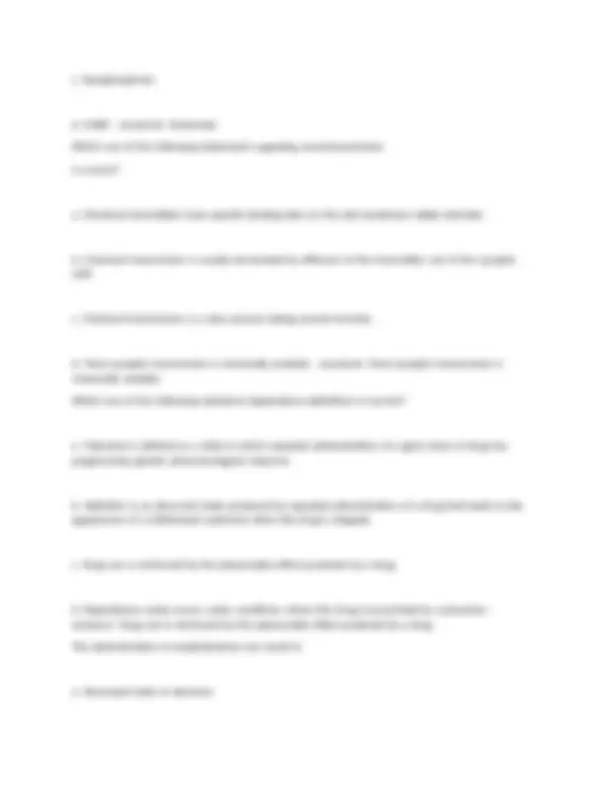
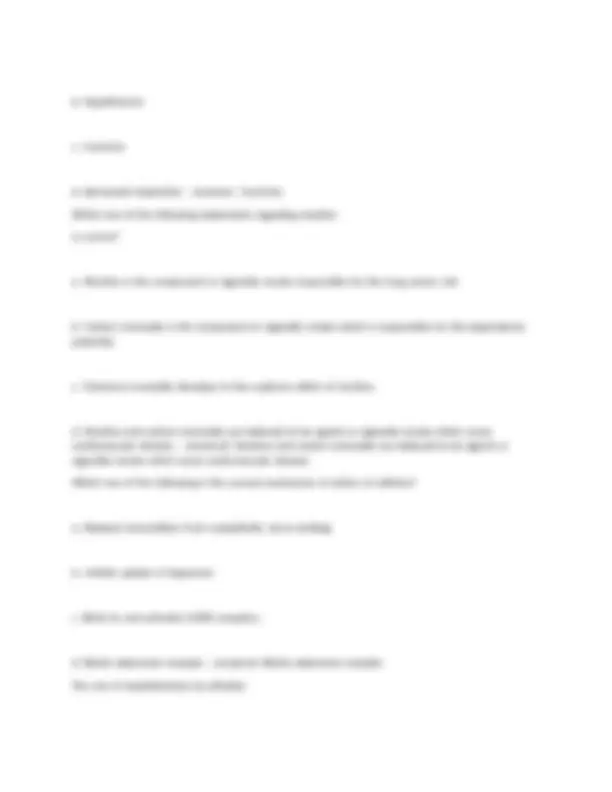

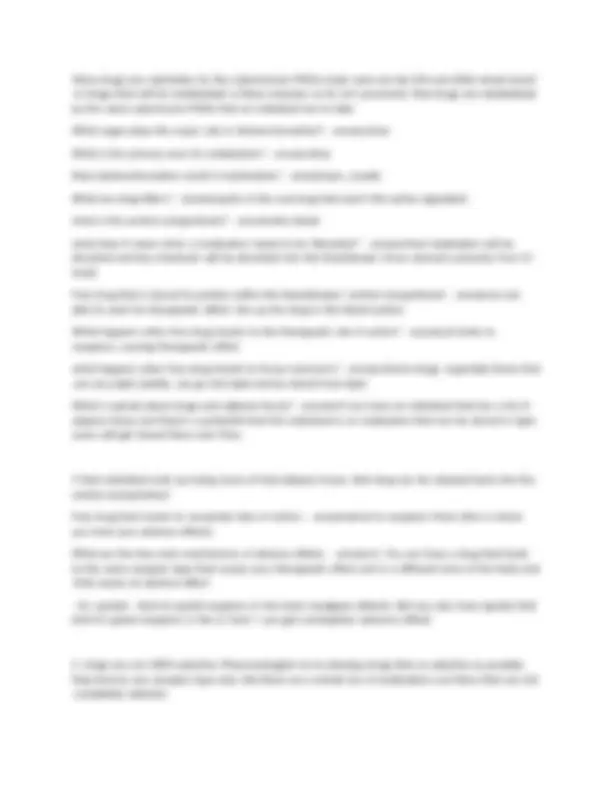
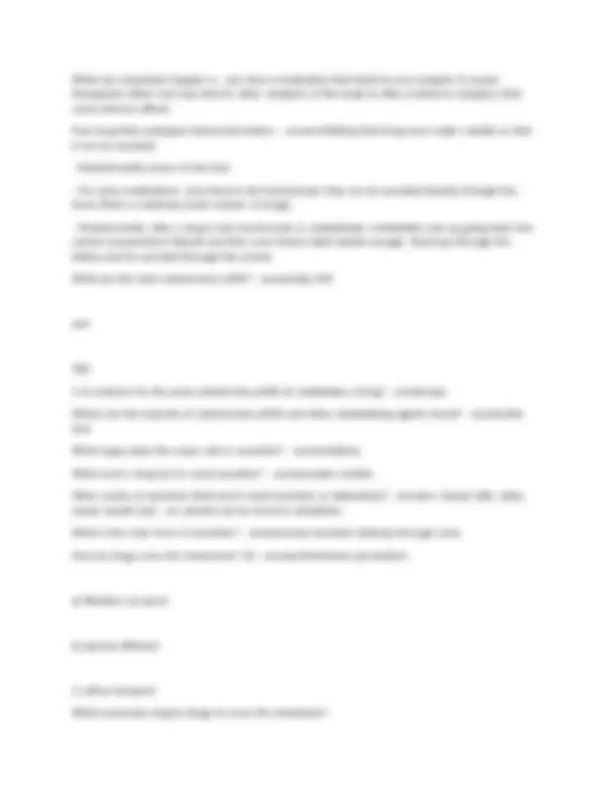
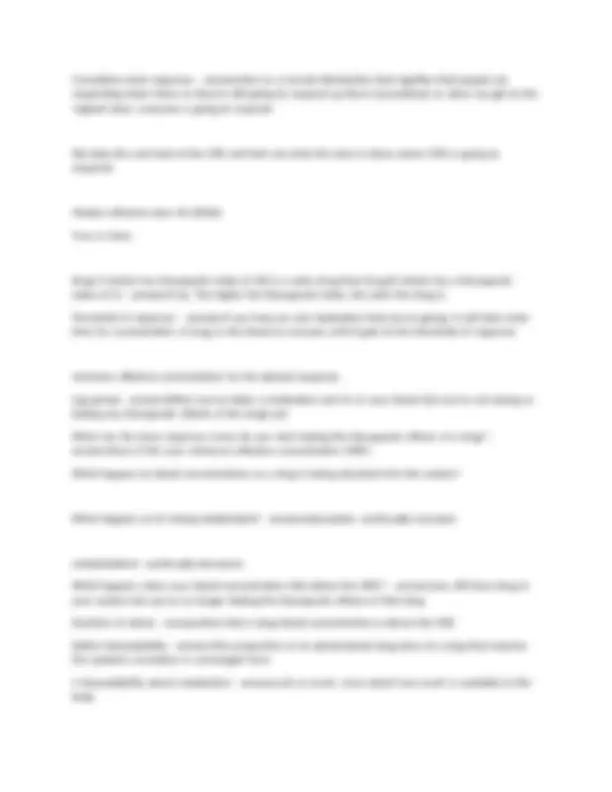
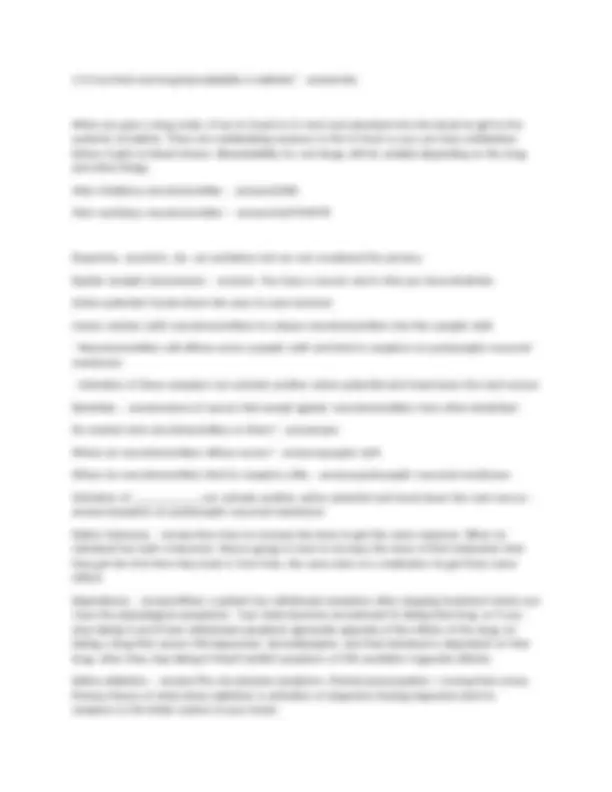
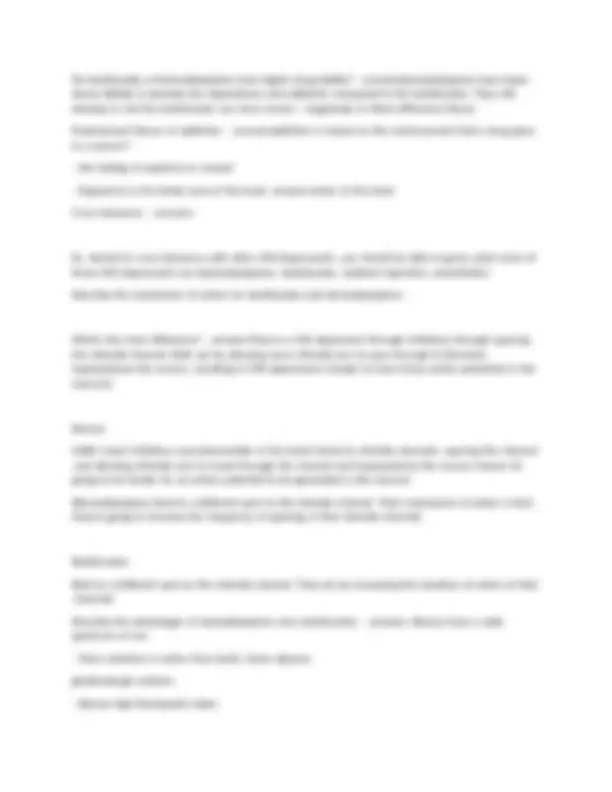
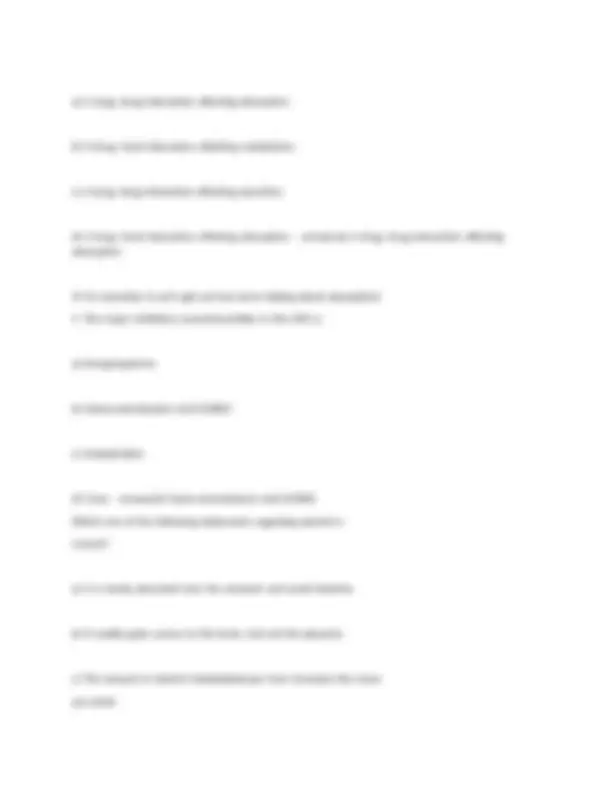
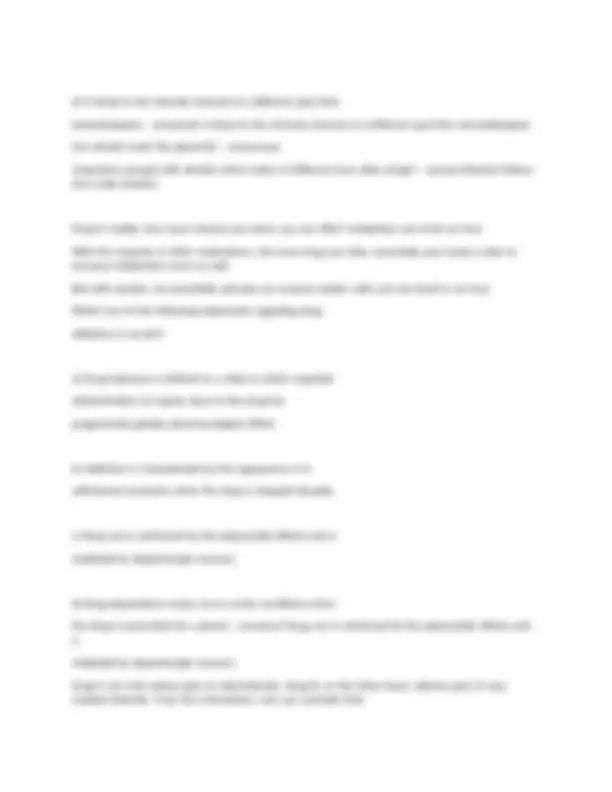
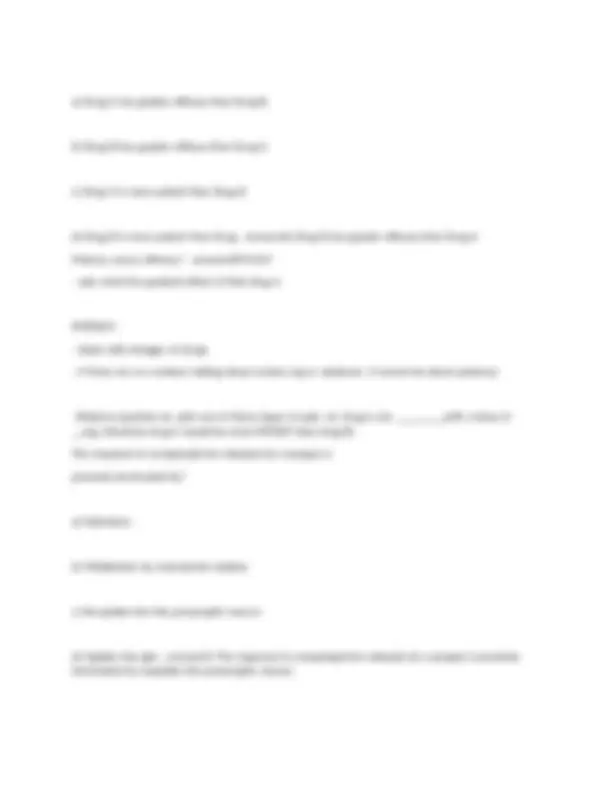
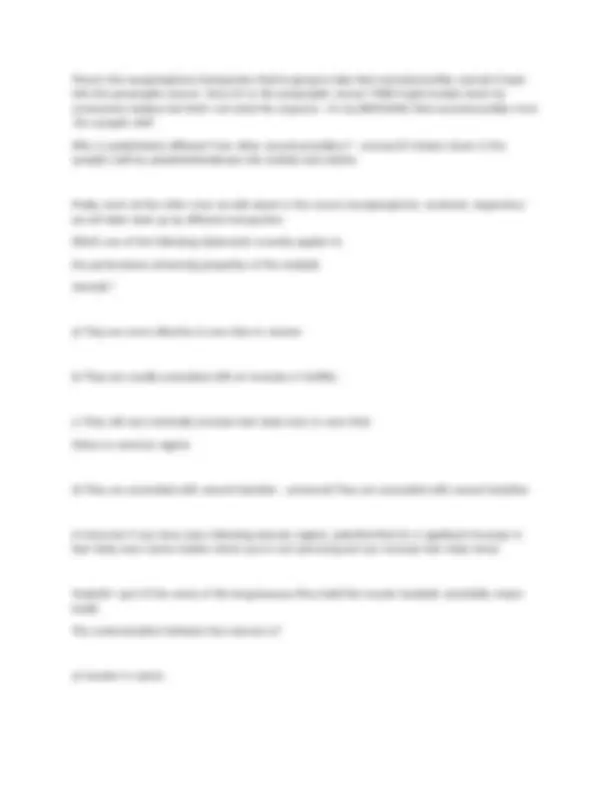
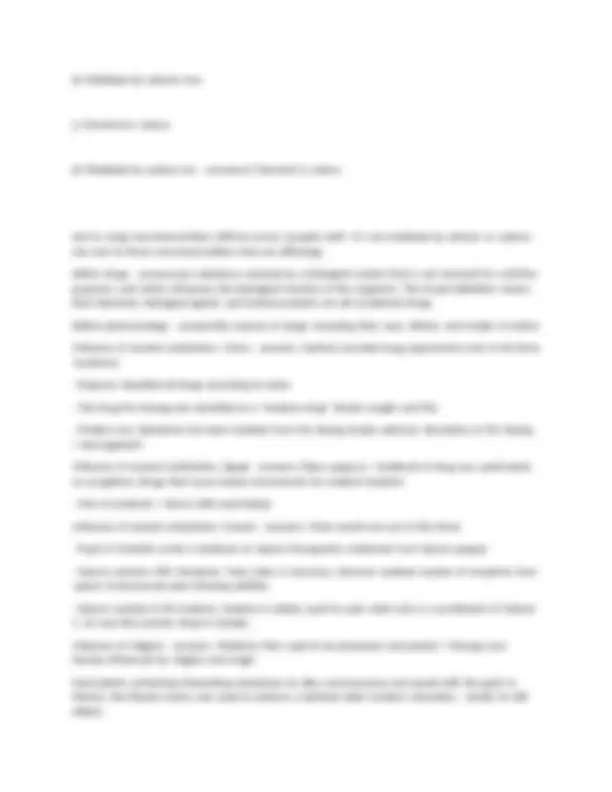
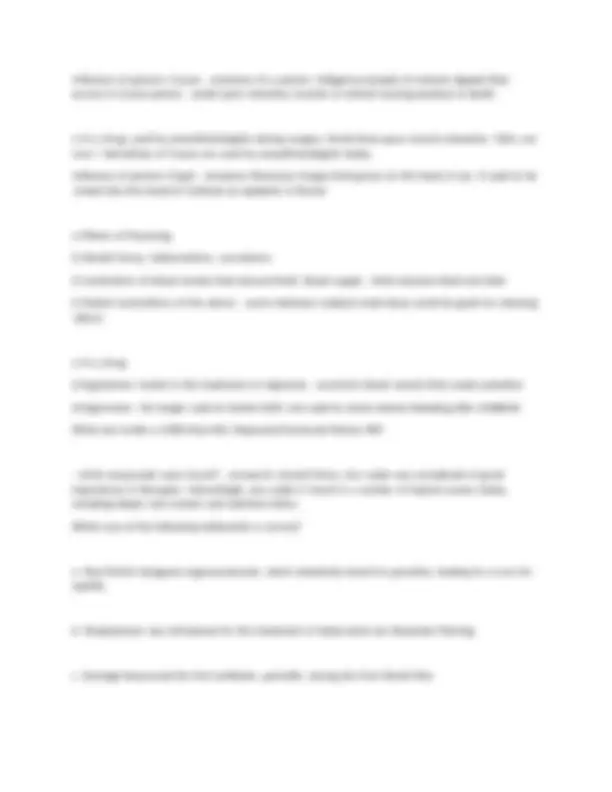
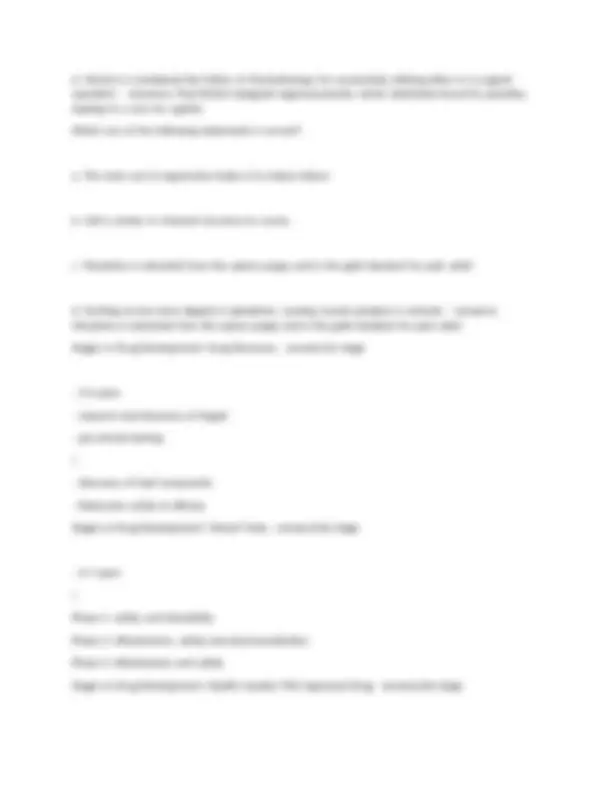
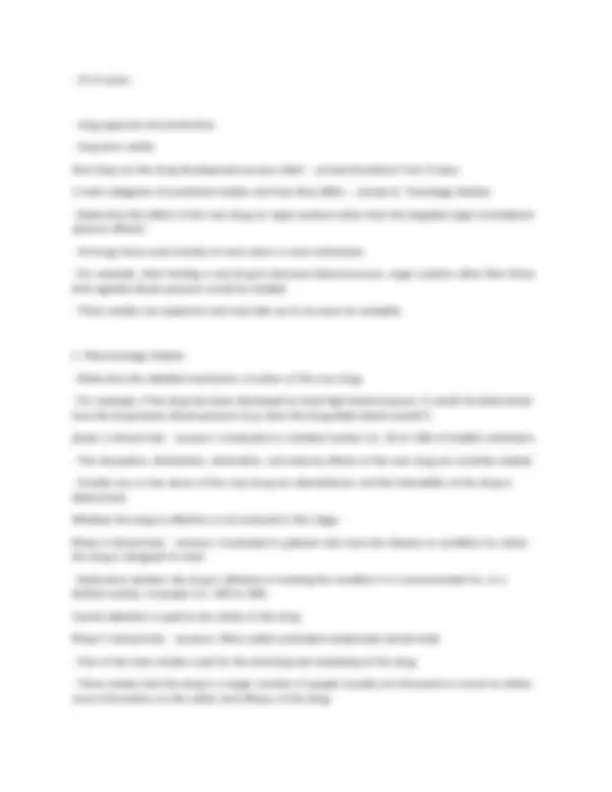
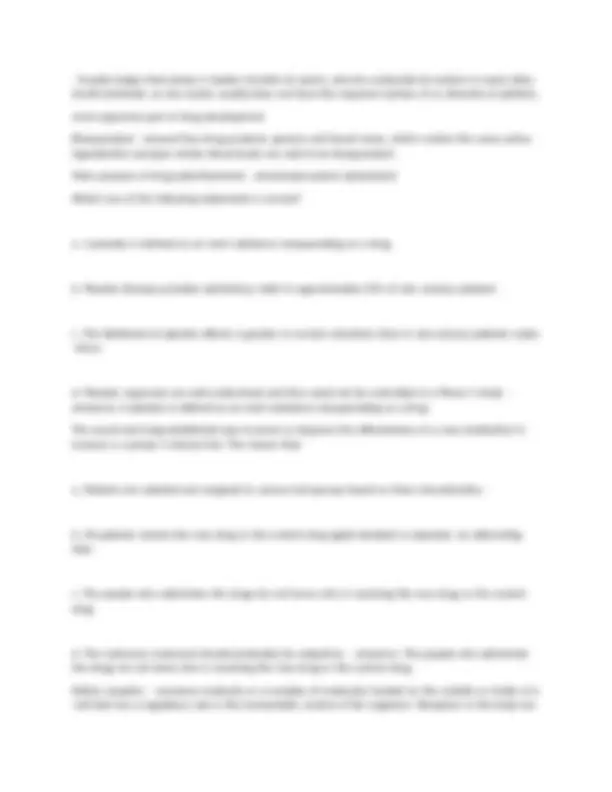
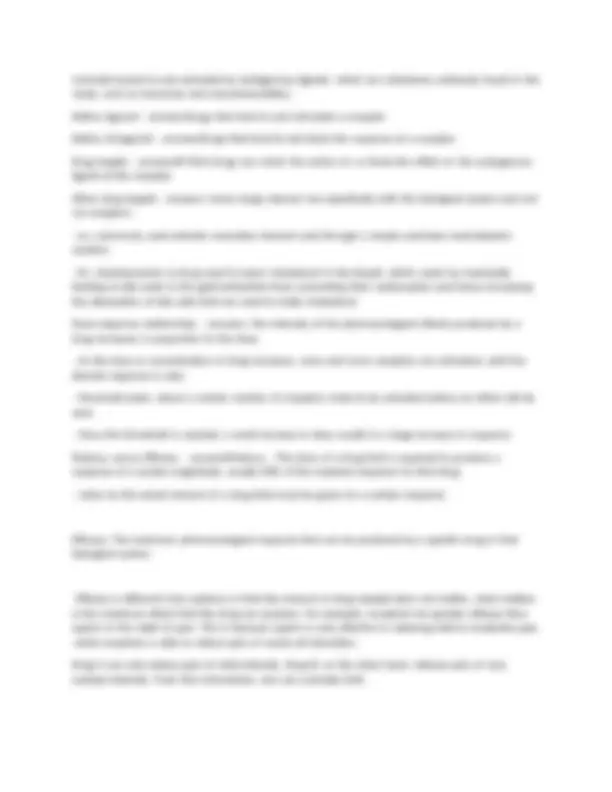
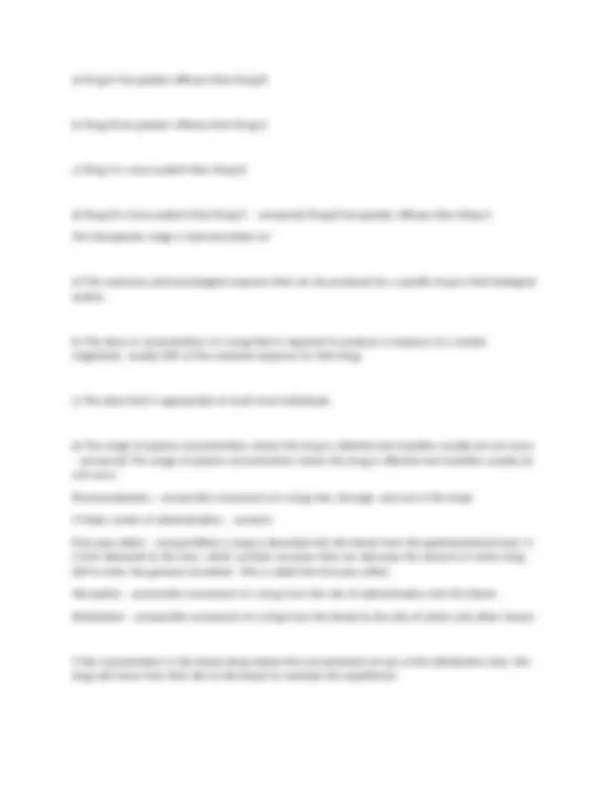
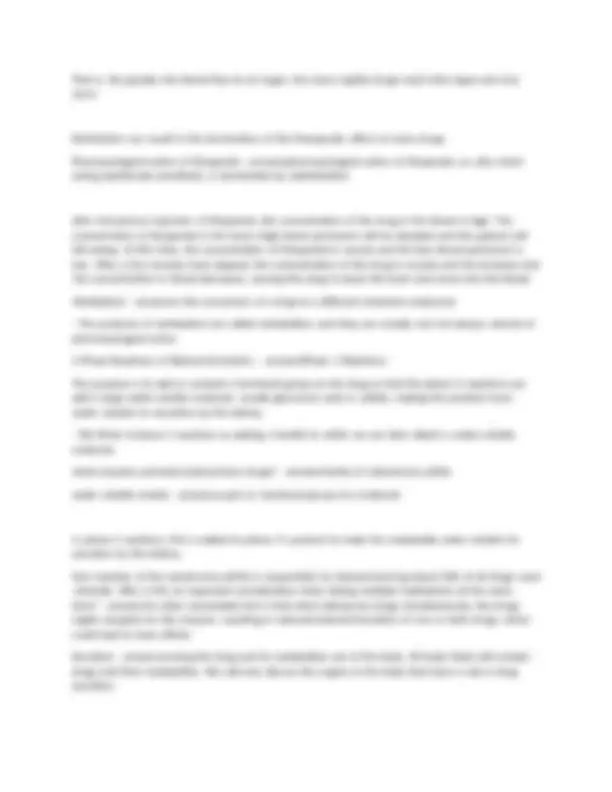
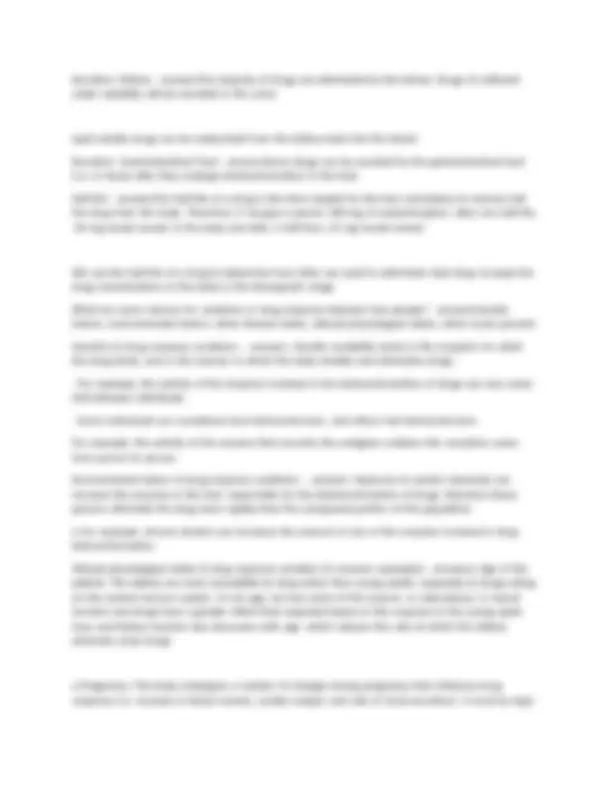
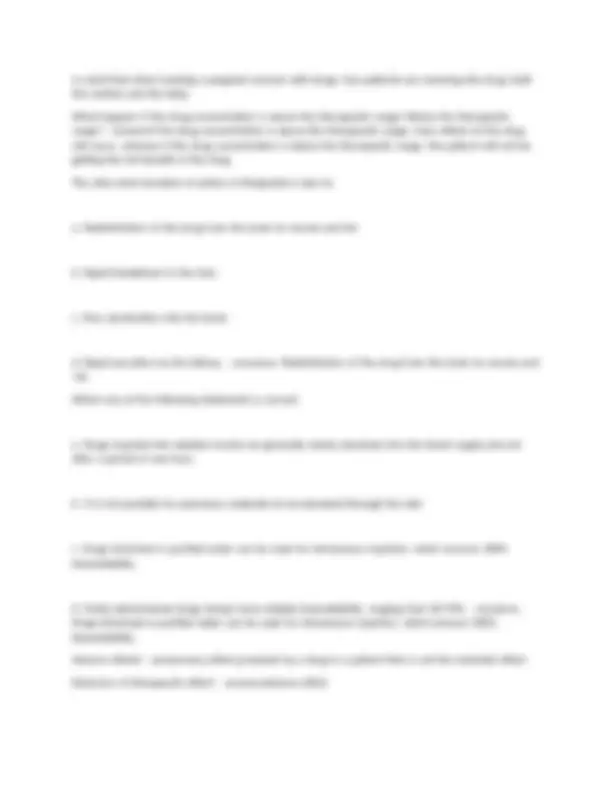
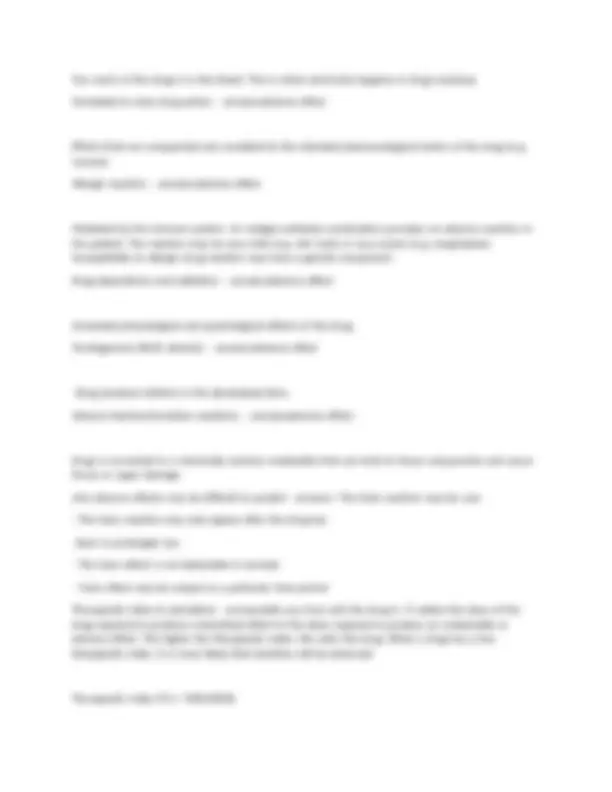
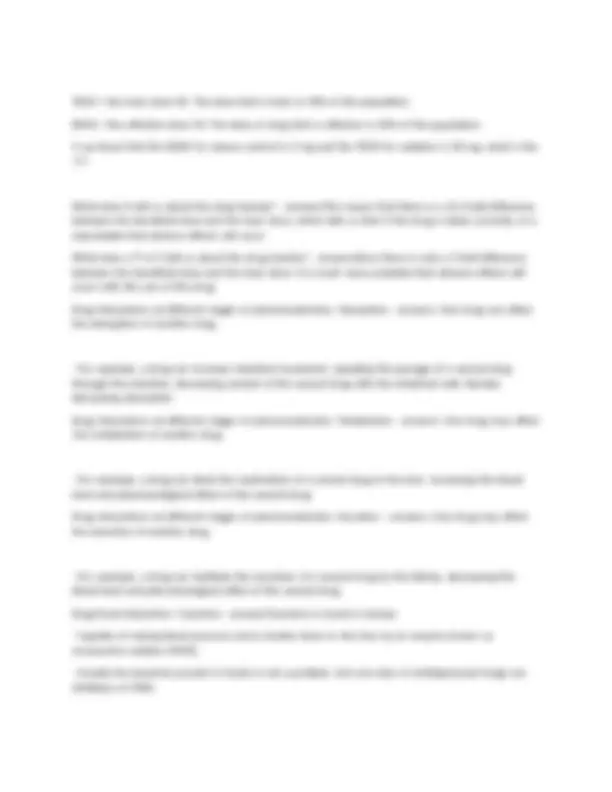
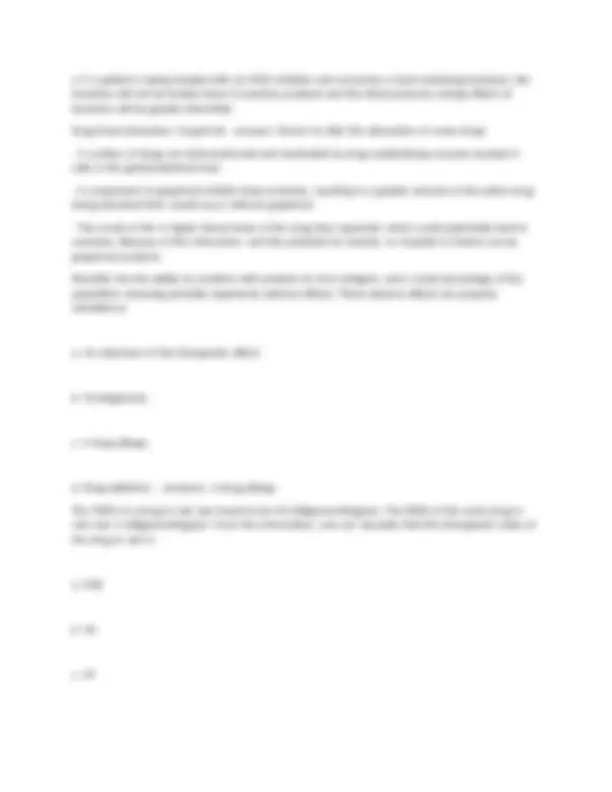
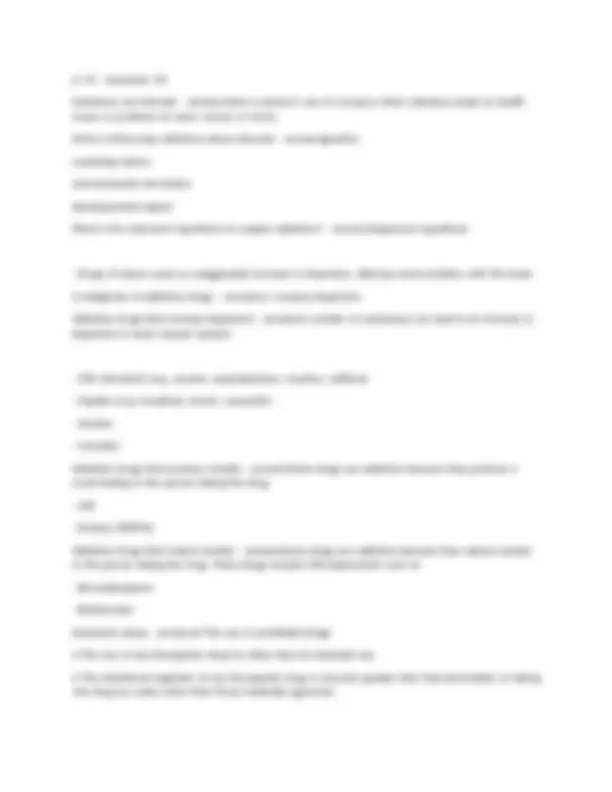
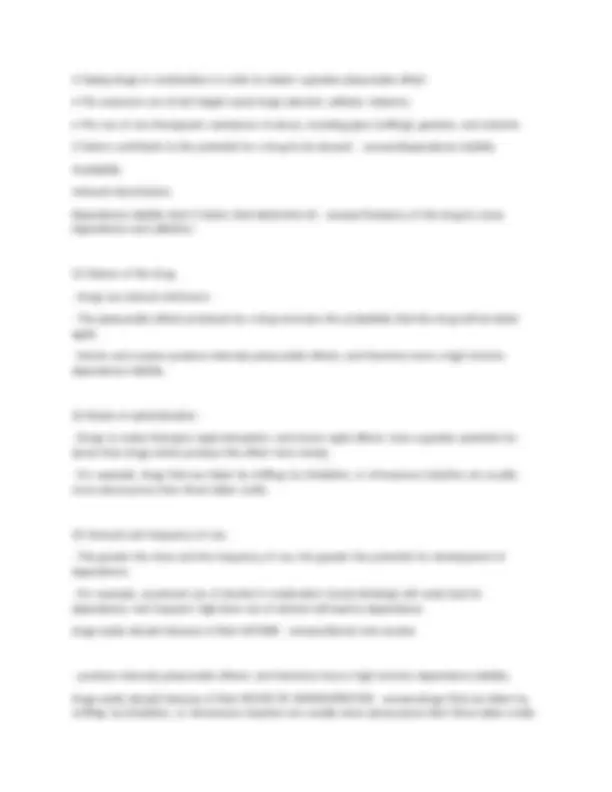
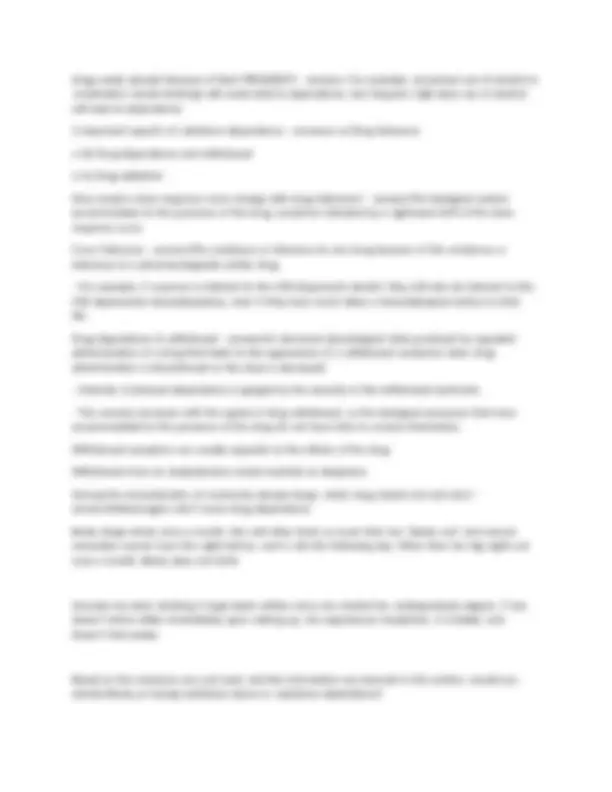
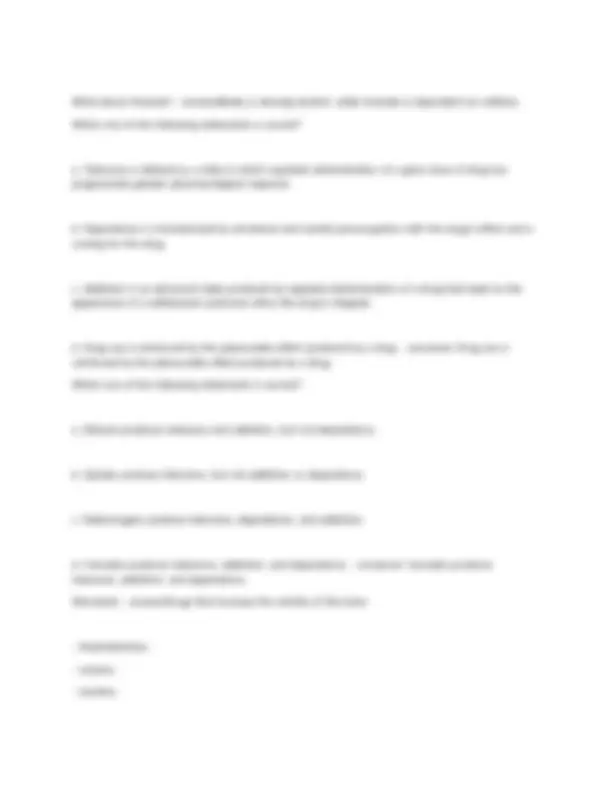
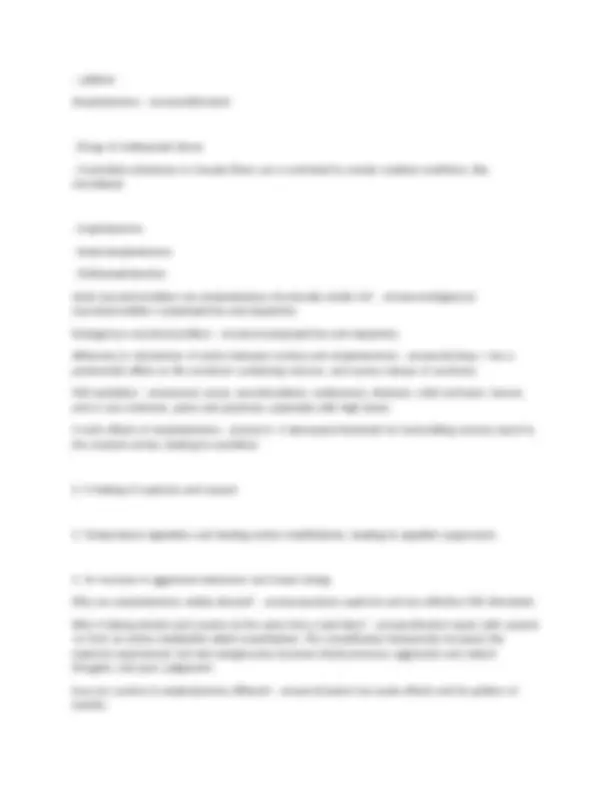
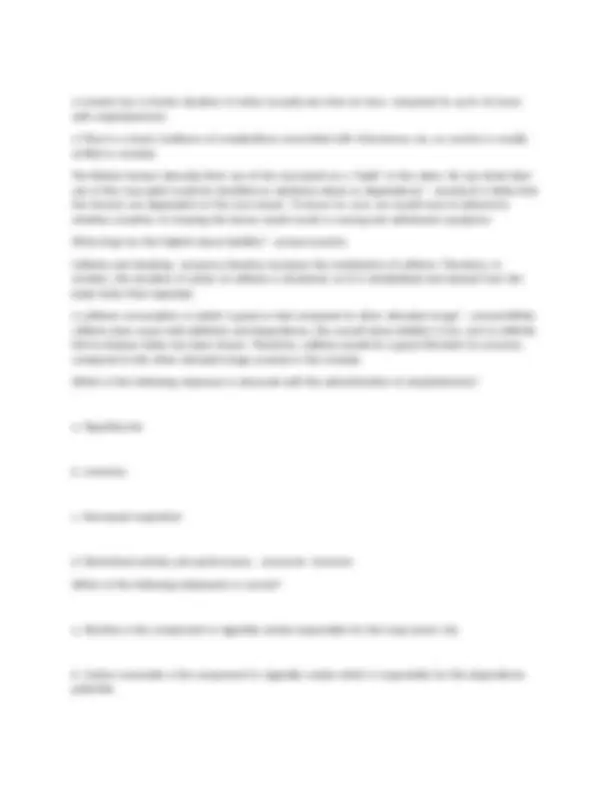
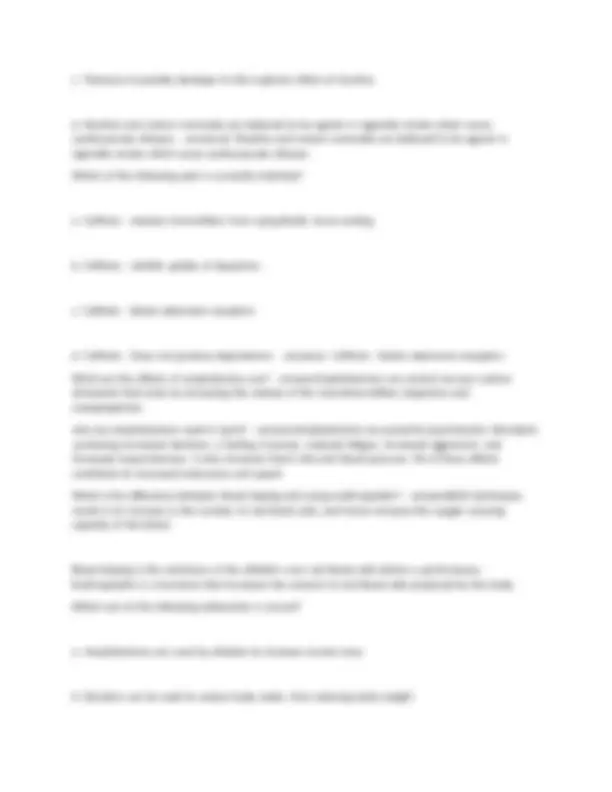
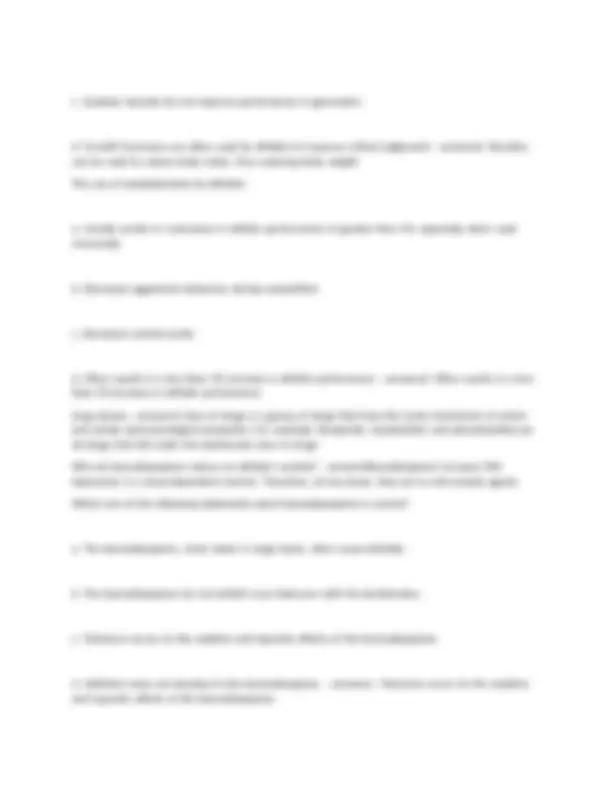
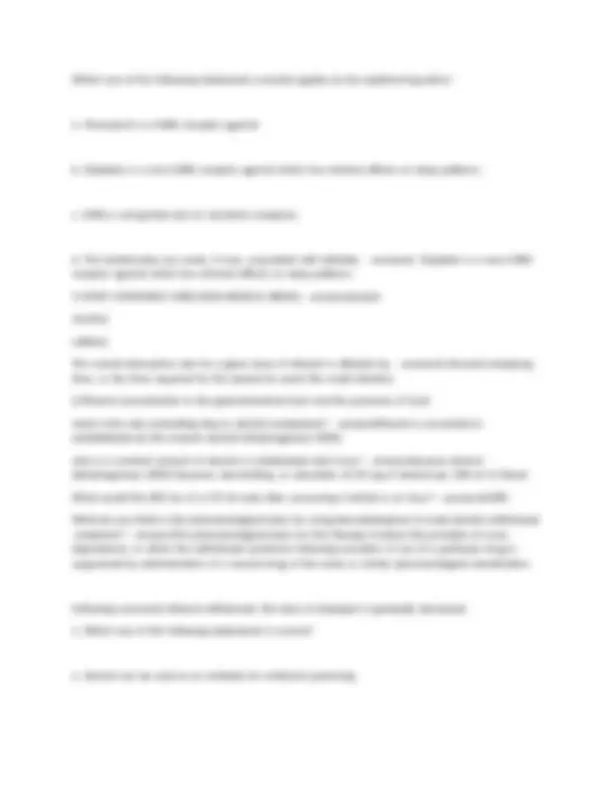
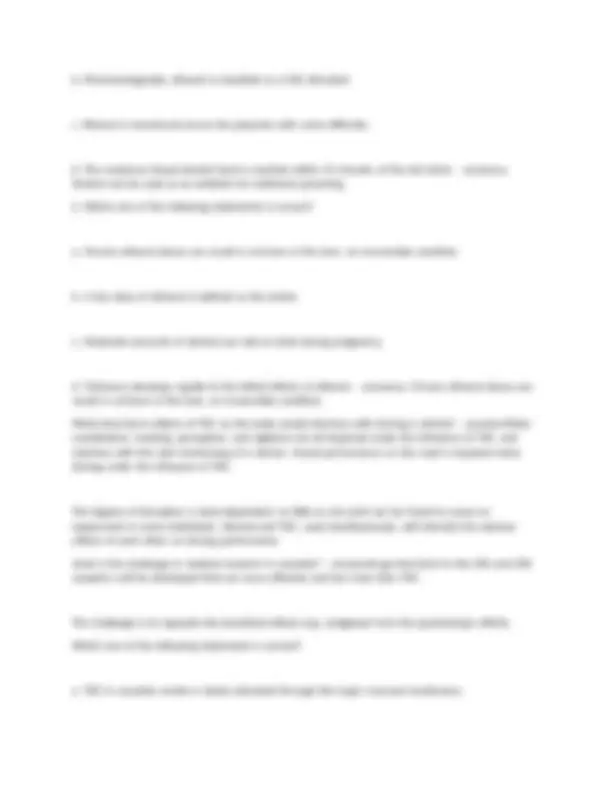
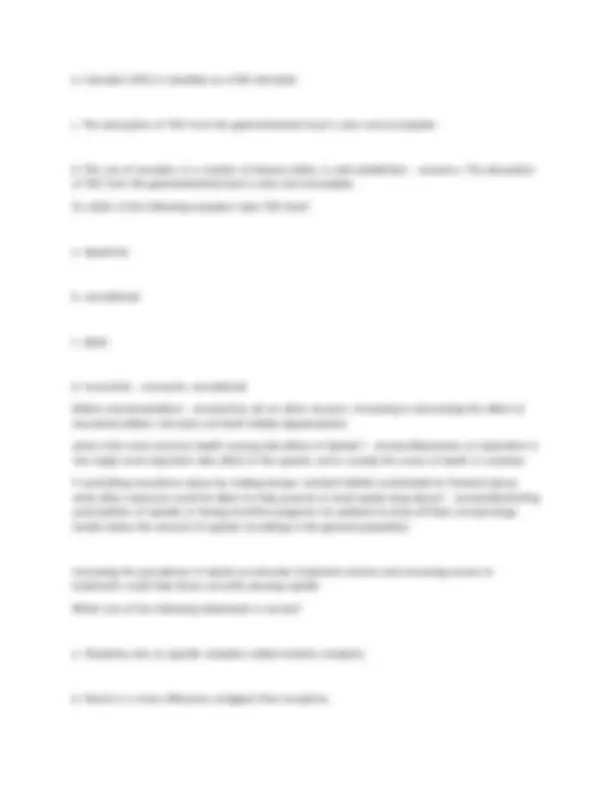
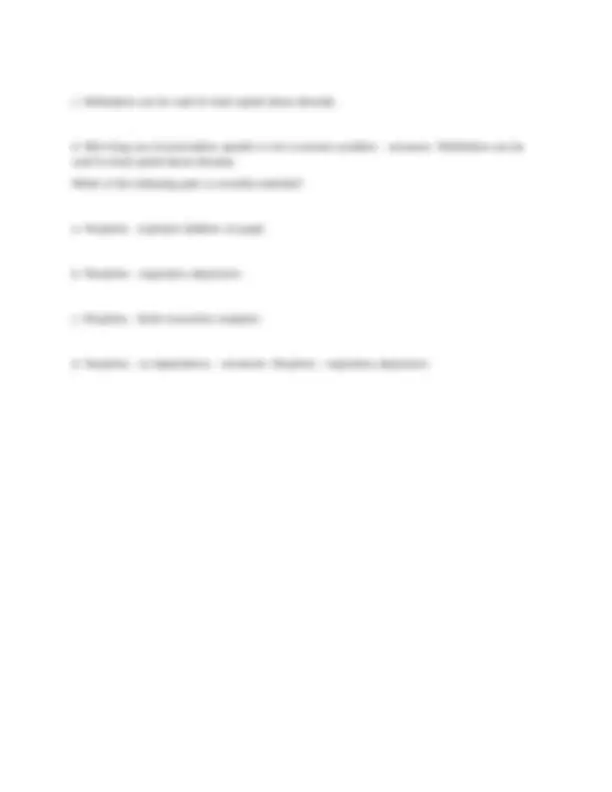


Study with the several resources on Docsity

Earn points by helping other students or get them with a premium plan


Prepare for your exams
Study with the several resources on Docsity

Earn points to download
Earn points by helping other students or get them with a premium plan
Community
Ask the community for help and clear up your study doubts
Discover the best universities in your country according to Docsity users
Free resources
Download our free guides on studying techniques, anxiety management strategies, and thesis advice from Docsity tutors
PHAR 100 Real Exam Questions and Correct Answers
Typology: Exams
1 / 46

This page cannot be seen from the preview
Don't miss anything!







































Which |one |of |the |following |statements |correctly |matches |the |scientist |with |their |drug |discovery? a. |Paul |Ehrlich |designed |organoarsenicals, |which |selectively |bound |to |parasites, |leading |to |a |cure |for | syphilis. b. |Streptomycin |was |introduced |for |the |treatment |of |tuberculosis |by |Alexander |Fleming. c. |Domagk |discovered |the |first |antibiotic, |penicillin, |during |the |First |World |War. d. |Sulfa |drugs |were |introduced |into |therapy |by |Waksman |to |treat |bacterial |disea |- |answersa. |Paul | Ehrlich |designed |organoarsenicals, |which |selectively |bound |to |parasites, |leading |to |a |cure |for |syphilis. The |sound |and |long-established |way |to |prove |or |disprove |the |value |of |a |new |medication |or | treatment |is |a |controlled |study. |This |includes: a. |Patients |are |selected |and |assigned |to |various |test |groups |based |on |their |characteristics. b. |All |patients |receive |the |new |drug |or |the |control |drug |(gold-standard |or |placebo), |on |alternating | days. c. |The |people |who |administer |the |drugs |do |not |know |who |is |receiving |the |new |drug |or |the |control | drug. d. |The |outcomes |measured |should |preferably |be |subjective |- |answersc. |The |people |who |administer | the |drugs |do |not |know |who |is |receiving |the |new |drug |or |the |control |drug. . Drug |A |can |only |relieve |pain |of |mild |intensity. |Drug |B, |on |the |other |hand, |relieves |pain |of |very | marked |intensity. |From |this |information, |one |can |conclude |that:
a) |Drug |A |has |greater |efficacy |than |Drug |B. b) |Drug |B |has |greater |efficacy |than |Drug |A. c) |Drug |A |is |more |potent |than |Drug |B. d) |Drug |B |is |more |potent |than |Drug |- |answersb) |Drug |B |has |greater |efficacy |than |Drug |A. The |therapeutic |range |is |best |described |as? a. |The |maximum |pharmacological |response |that |can |be |produced |by |a |specific |drug |in |that |biological | system. b. |The |dose |or |concentration |of |a |drug |that |is |required |to |produce |a |response |of |a |certain | magnitude, |usually |50% |of |the |maximal |response |for |that |drug. c. |The |dose |that |is |appropriate |to |treat |most |individuals. d. |The |range |of |plasma |concentrations |where |the |drug |is |effective |but |toxicities |usually |do |not |occur |- |answersd. |The |range |of |plasma |concentrations |where |the |drug |is |effective |but |toxicities |usually |do | not |occur The |ultra-short |duration |of |action |of |thiopental |is |due |to: a. |Redistribution |of |the |drug |from |the |brain |to |muscle |and |fat. b. |Rapid |breakdown |in |the |liver. c. |Poor |penetration |into |the |brain.
c. |Norepinephrine d. |GABA |- |answersb. |Glutamate Which |one |of |the |following |statements |regarding |neurotransmission is |correct? a. |Chemical |transmitters |have |specific |binding |sites |on |the |cell |membrane |called |retinoids. b. |Chemical |transmission |is |usually |terminated |by |diffusion |of |the |transmitter |out |of |the |synaptic | cleft. c. |Chemical |transmission |is |a |slow |process |taking |several |minutes. d. |Most |synaptic |transmission |is |chemically |mediate |- |answersd. |Most |synaptic |transmission |is | chemically |mediate Which |one |of |the |following |substance |dependence |definitions |is |correct? a. |Tolerance |is |defined |as |a |state |in |which |repeated |administration |of |a |given |dose |of |drug |has | progressively |greater |pharmacological |response. b. |Addiction |is |an |abnormal |state |produced |by |repeated |administration |of |a |drug |that |leads |to |the | appearance |of |a |withdrawal |syndrome |when |the |drug |is |stopped. c. |Drug |use |is |reinforced |by |the |pleasurable |effect |produced |by |a |drug. d. |Dependence |rarely |occurs |under |conditions |where |the |drug |is |prescribed |by |a |physician |- | answersc. |Drug |use |is |reinforced |by |the |pleasurable |effect |produced |by |a |drug. The |administration |of |amphetamines |can |result |in: a. |Decreased |state |of |alertness
b. |Hypothermia c. |Insomnia d. |decreased |respiration |- |answersc. |Insomnia Which |one |of |the |following |statements |regarding |nicotine is |correct? a. |Nicotine |is |the |component |in |cigarette |smoke |responsible |for |the |lung |cancer |risk. b. |Carbon |monoxide |is |the |component |in |cigarette |smoke |which |is |responsible |for |the |dependence | potential. c. |Tolerance |invariably |develops |to |the |euphoric |effect |of |nicotine. d. |Nicotine |and |carbon |monoxide |are |believed |to |be |agents |in |cigarette |smoke |which |cause | cardiovascular |disease. |- |answersd. |Nicotine |and |carbon |monoxide |are |believed |to |be |agents |in | cigarette |smoke |which |cause |cardiovascular |disease. Which |one |of |the |following |is |the |correct |mechanism |of |action |of |caffeine? a. |Releases |transmitters |from |sympathetic |nerve |endings. b. |Inhibits |uptake |of |dopamine. c. |Binds |to |and |activates |GABA |receptors. d. |Blocks |adenosine |receptor |- |answersd. |Blocks |adenosine |receptor The |use |of |amphetamines |by |athletes:
Which |one |of |the |following |statements |regarding |alcohol is |correct? a. |Alcohol |can |be |used |as |an |antidote |for |methanol |poisoning. b. |Pharmacologically, |ethanol |is |classified |as |a |CNS |stimulant. c. |Ethanol |is |transferred |across |the |placenta |with |some |difficulty. d. |The |maximum |blood |alcohol |level |is |reached |within | 15 |minutes |of |the |last |drink. |- |answersa. | Alcohol |can |be |used |as |an |antidote |for |methanol |poisoning. Which |one |of |the |following |statements |accurately |applies |to |alcohol |consumption? a. |Chronic |ethanol |abuse |can |result |in |cirrhosis |of |the |liver, |an |irreversible |condition. b. |One |or |two |drinks |is |usually |sufficient |to |lead |to |depression |and |irritability. c. |Moderate |amounts |of |alcohol |are |safe |to |drink |during |pregnancy. d. |Tolerance |develops |rapidly |to |the |lethal |effects |of |ethan |- |answersa. |Chronic |ethanol |abuse |can | result |in |cirrhosis |of |the |liver, |an |irreversible |condition. To |which |of |the |following |receptors |does |THC |bind? a. |dopamine b. |cannabinoid c. |delta
d. |muscarinic |- |answersb. |cannabinoid Administration |of |morphine |will |cause |which |one |of |the |following |physiological |effects? a. |Mydriasis |(dilation |of |pupil). b. |Respiratory |depression. c. |Diarrhea. d. |CNS |excitation |- |answersb. |Respiratory |depression. Discuss |the |factors |that |contribute |to |the removal |of |a |drug |from |the |body. |- |answersADME: Absorption Distribution Metabolism Excretion Processes |that |a |drug |goes |through |when |it |enters |the |body |until |it |exits. |Primary |factors |that | contributes |to |the |removal |of |a |drug |from |the |body |is |Metabolism |(ex: |through |the |liver |) |and | excretion. What |is |Biotransformation? |- |answersWhen |the |liver |uses |its |enzymes |to |convert |drugs |and |other | chemicals |to |water |soluble |products |that |are |excreted |from |the |urine Purpose: |to |make |a |drug |more |water |soluble |so |that |it |can |actually |be |excreted |by |the |body What |is |important |to |know |about |cytochromes |P450? |- |answers(biotransformation) |Genetic |variability |
What |can |sometimes |happen |is |: |you |have |a |medication |that |binds |to |one |receptor |& |causes | therapeutic |effect, |but |may |bind |to |other |receptors |of |the |body |& |often |it |binds |to |receptors |that | cause |adverse |effects Free |drug |that |undergoes |biotransformation: |- |answersMaking |that |drug |more |water |soluble |so |that | it |can |be |excreted
a) |absorption b) |distribution | c) |excretion | d) |all |of |the |above e) |none |of |the |above |- |answersd) |all |of |the |above In |nature, |what |are |membranes? |- |answerslipoid |in |nature: |we |have |to |have |enough |lipid |solubility |of |a |drug |to |be |able |to |cross |those |membranes What |is |the |most |common |mechanism |for |drugs |& |membrane |permeation? |- |answerspassive | diffusion What |is |membrane |permeation? |- |answersAbsorption, |distribution |and |excretion |all |require |drugs |to | cross |membranes |(lipid |in |nature, |so |require |active |transport, |diffusion |and |filtration |via |pores) Drug |permeation |via |pores: |- |answersUncommon |because |drug |has |to |be |really |small
Cumulative |dose |response: |- |answersline |on |a |normal |distribution |that |signifies |that |people |are | responding |down |there |so |they're |still |going |to |respond |up |there |(cumulative) |so |when |we |get |to |the |highest |dose, |everyone |is |going |to |respond. We |take |this |and |look |at |the |50% |and |find |out |what |the |dose |is |(dose |where |50% |is |going |to | respond) Median |effective |dose | 50 |(ED50) True |or |false: | Drug |A |(which |has |therapeutic |index |of |50) |is |a |safer |drug |than |Drug |B |(which |has |a |therapeutic | index |of |5) |- |answersTrue. |The |higher |the |therapeutic |index, |the |safer |the |drug |is. Threshold |of |response: |- |answersIf |you |have |an |oral |medication |that |you're |giving, |it |will |take |some | time |for |concentration |of |drug |in |the |blood |to |increase |until |it |gets |to |the |threshold |of |response: | minimum |effective |concentration |for |the |desired |response Lag |period |- |answersWhen |you've |taken |a |medication |and |it's |in |your |blood |but |you're |not |seeing |or | feeling |any |therapeutic |effects |of |the |drugs |yet When |(on |the |dose |response |curve) |do |you |start |feeling |the |therapeutic |effects |of |a |drug? |- | answersOnce |it |hits |your |minimum |effective |concentration |(MEC) What |happens |to |blood |concentrations |as |a |drug |is |being |absorbed |into |the |system? What |happens |as |it's |being |metabolised? |- |answersabsorption: |continually |increases | metabolization: |continually |decreases What |happens |when |your |blood |concentration |falls |below |the |MEC? |- |answersyou |still |have |drug |in | your |system |but |you're |no |longer |feeling |the |therapeutic |effects |of |that |drug Duration |of |action |- |answerstime |that |a |drug |blood |concentration |is |above |the |MEC Define |bioavailability |- |answersThe |proportion |of |an |administered |drug |dose |of |a |drug |that |reaches | the |systemic |circulation |in |unchanged |form Is |bioavailability |about |metabolism |- |answersnot |so |much, |more |about |how |much |is |available |to |the | body
Is |it |true |that |oral |drug |bioavailability |is |definite? |- |answersNo. | When |you |give |a |drug |orally, |it |has |to |travel |to |GI |tract |and |absorbed |into |the |blood |to |get |to |the | systemic |circulation. |There |are |metabolising |enzymes |in |the |GI |tract |so |you |can |have |metabolism | before |it |gets |to |blood |stream. |Bioavailability |for |oral |drugs |will |be |variable |depending |on |the |drug | and |other |things. Main |inhibitory |neurotransmitter: |- |answersGABA Main |excitatory |neurotransmitter: |- |answersGLUTAMATE Dopamine, |serotonin, |etc. |are |excitatory |but |are |not |considered |the |primary Explain |synaptic |transmission: |- |answers- |You |have |a |neuron |and |in |that |you |have |dendrites | Action |potential |Travels |down |the |axon |to |axon |terminal Causes |vesicles |(with |neurotransmitters) |to |release |neurotransmitters |into |the |synaptic |cleft. |
Therapeutic |index |is |TD50/ED50 |; 50/ = Which |one |of |the |following |statements |regarding |drug |administration |is |correct? a) |With |oral |administration |of |a |drug, |there |is |always |an |excellent relationship |between |the |dose |of |a |drug |administered |and |its |concentration |in |the |blood. b) |After |injection |of |drugs |into |skeletal |muscle, |the |drugs |are |generally |slowly |absorbed |into |the | blood |supply |of |the |muscle |and |will |usually |act |after |a |period |of | 20 |hours. c) |Virtually |no |poisonous |materials |are |readily |absorbed |through |the |skin |as |the |skin |is |an |effective | barrier. d) |If |specially |purified |water |is |not |used |for |dissolving |drugs |prior |to intravenous |injection, |the |pyrogens |present |in |the |water |could |cause |fever. |- |answersd) |If |specially | purified |water |is |not |used |for |dissolving |drugs |prior |to |intravenous |injection, |the |pyrogens |present |in | the |water |could |cause |fever. (With |an |IV |injection, |you |need |to |make |sure |you |have |purified |water, |you |can't |just |use |tap |water) A= |incorrect. |Bioavailability, |there |isn't |actually |a |good |relationship, |It |may |only |be |30% |bioavailable | (ex |only |30mg |of |100mg |get |into |the |blood) B= |incorrect. |It's |usually |about | 2 |hours. |(know |in |general |the |routes |of |administration, |whether |their | bioavailability |is |variable, |and |roughly |how |long |it |takes |for |those |drugs |to |act) C= |incorrect. |Any |drug |that |is |lipid |soluble |enough |will |go |through |the |skin A |drug |is |administered |orally |at |the |same |time |as |an |antacid |preparation. |The |two |drugs |combine | together |in |the |intestine |to |form |a |complex |that |cannot |cross |into |the |blood. |This |reaction |is |best | described |as?
d) |It |binds |to |the |chloride |channel |at |a |different |spot |than benzodiazepine |- |answersd) |It |binds |to |the |chloride |channel |at |a |different |spot |than |benzodiazepine Can |alcohol |reach |the |placenta? |- |answersyes Important |concept |with |alcohol |which |makes |it |different |from |other |drugs? |- |answersAlcohol |follows | zero |order |kinetics Doesn't |matter |how |much |alcohol |you |drink, |you |can |ONLY |metabolize |one |drink |an |hour With |the |majority |of |other |medications, |the |more |drug |you |take, |essentially |your |body |is |able |to | increase |metabolism |more |as |well But |with |alcohol, |we |essentially |saturate |our |enzyme |system |with |just |one |drink |in |an |hour Which |one |of |the |following |statements |regarding |drug addiction |is |correct? a) |Drug |tolerance |is |defined |as |a |state |in |which |repeated administration |of |a |given |dose |of |the |drug |has progressively |greater |pharmacological |effect. b) |Addiction |is |characterized |by |the |appearance |of |a withdrawal |syndrome |when |the |drug |is |stopped |abruptly. c) |Drug |use |is |reinforced |by |the |pleasurable |effects |and |is mediated |by |dopaminergic |neurons. d) |Drug |dependence |rarely |occurs |under |conditions |when the |drug |is |prescribed |by |a |physici |- |answersc) |Drug |use |is |reinforced |by |the |pleasurable |effects |and | is mediated |by |dopaminergic |neurons. Drug |A |can |only |relieve |pain |of |mild |intensity. |Drug |B, |on |the |other |hand, |relieves |pain |of |very | marked |intensity. |From |this |information, |one |can |conclude |that:
a) |Drug |A |has |greater |efficacy |than |Drug |B. b) |Drug |B |has |greater |efficacy |than |Drug |A. c) |Drug |A |is |more |potent |than |Drug |B. d) |Drug |B |is |more |potent |than |Drug |- |answersb) |Drug |B |has |greater |efficacy |than |Drug |A. Potency |versus |efficacy? |- |answersEFFICACY |